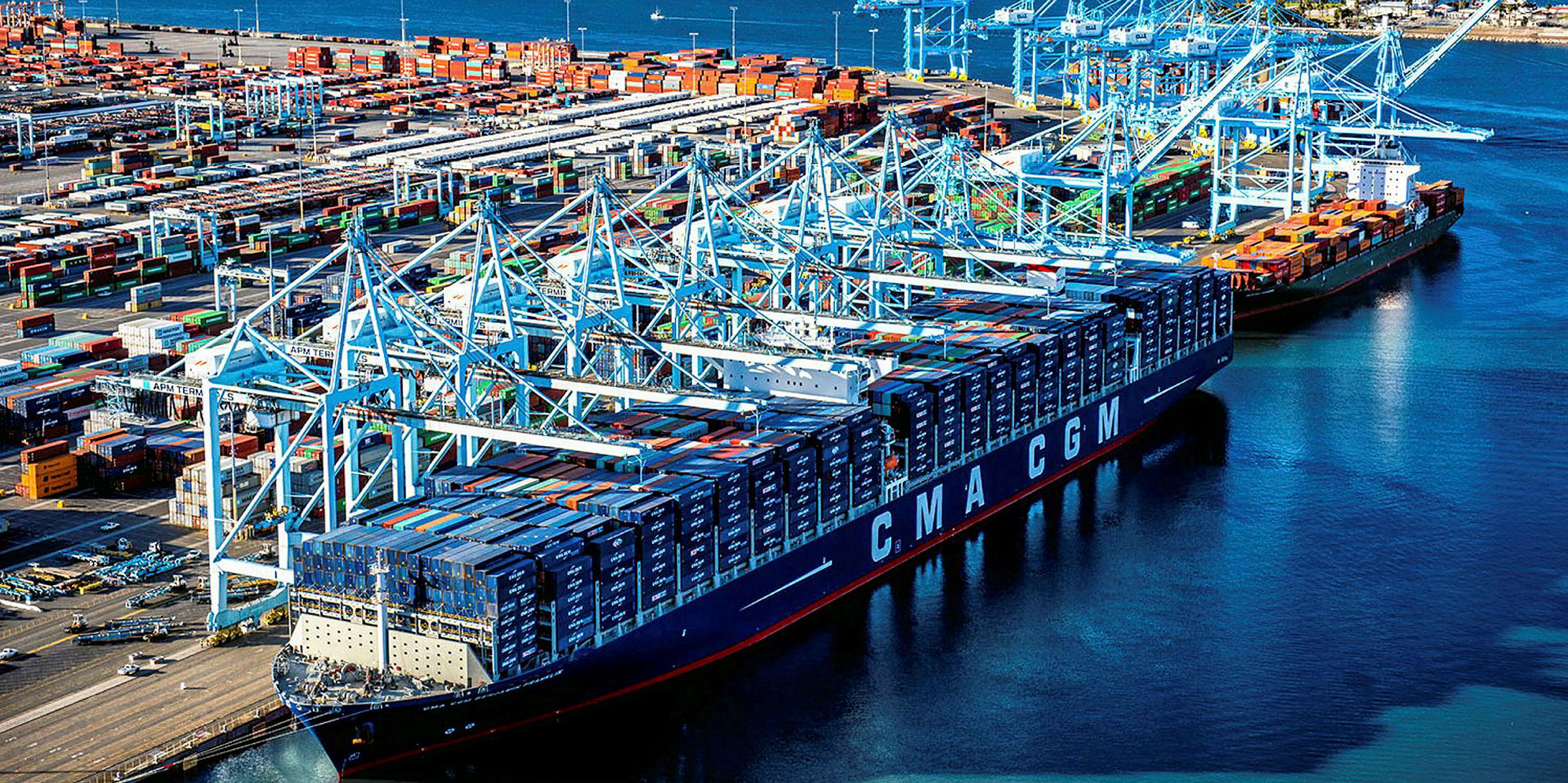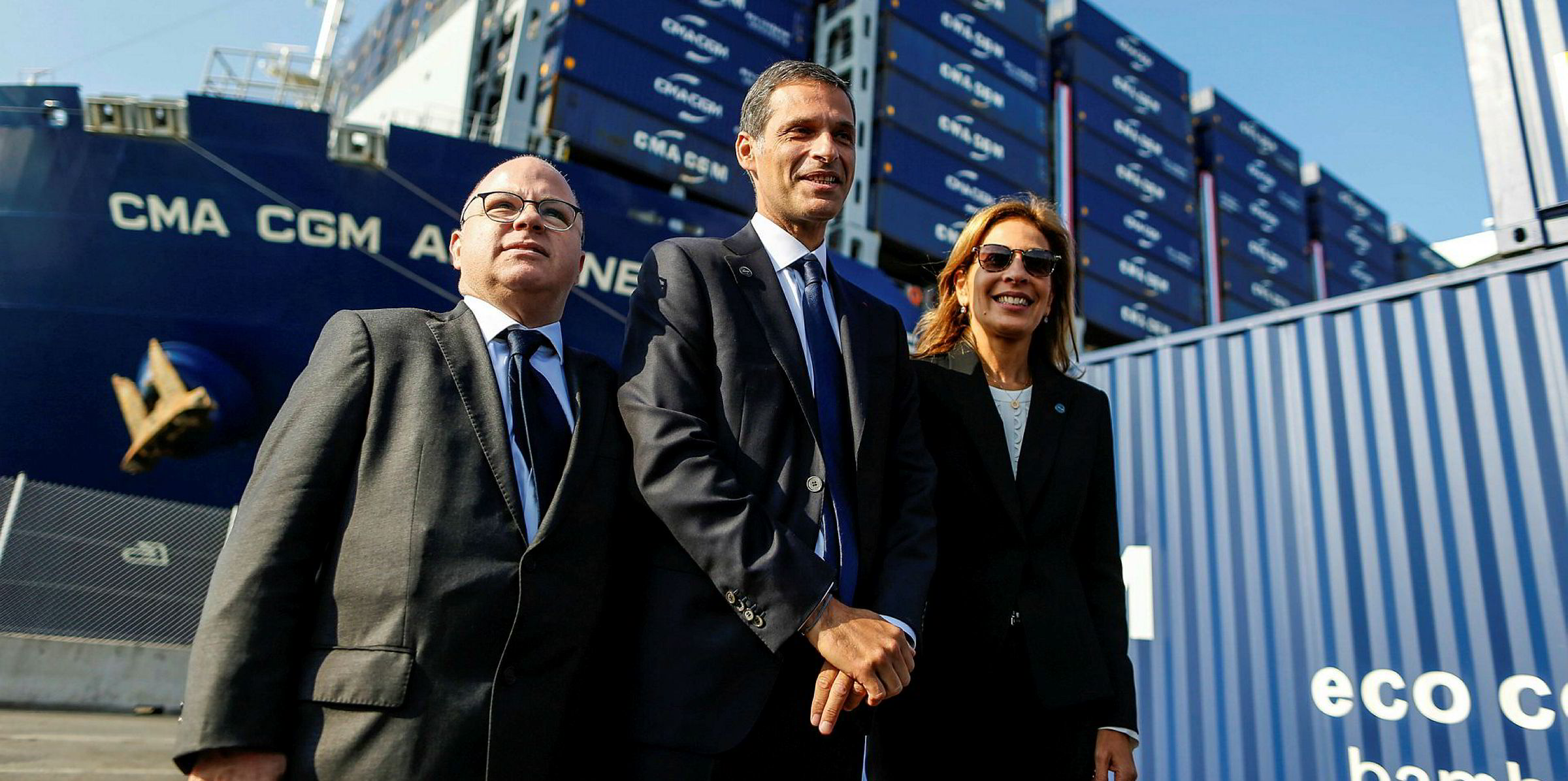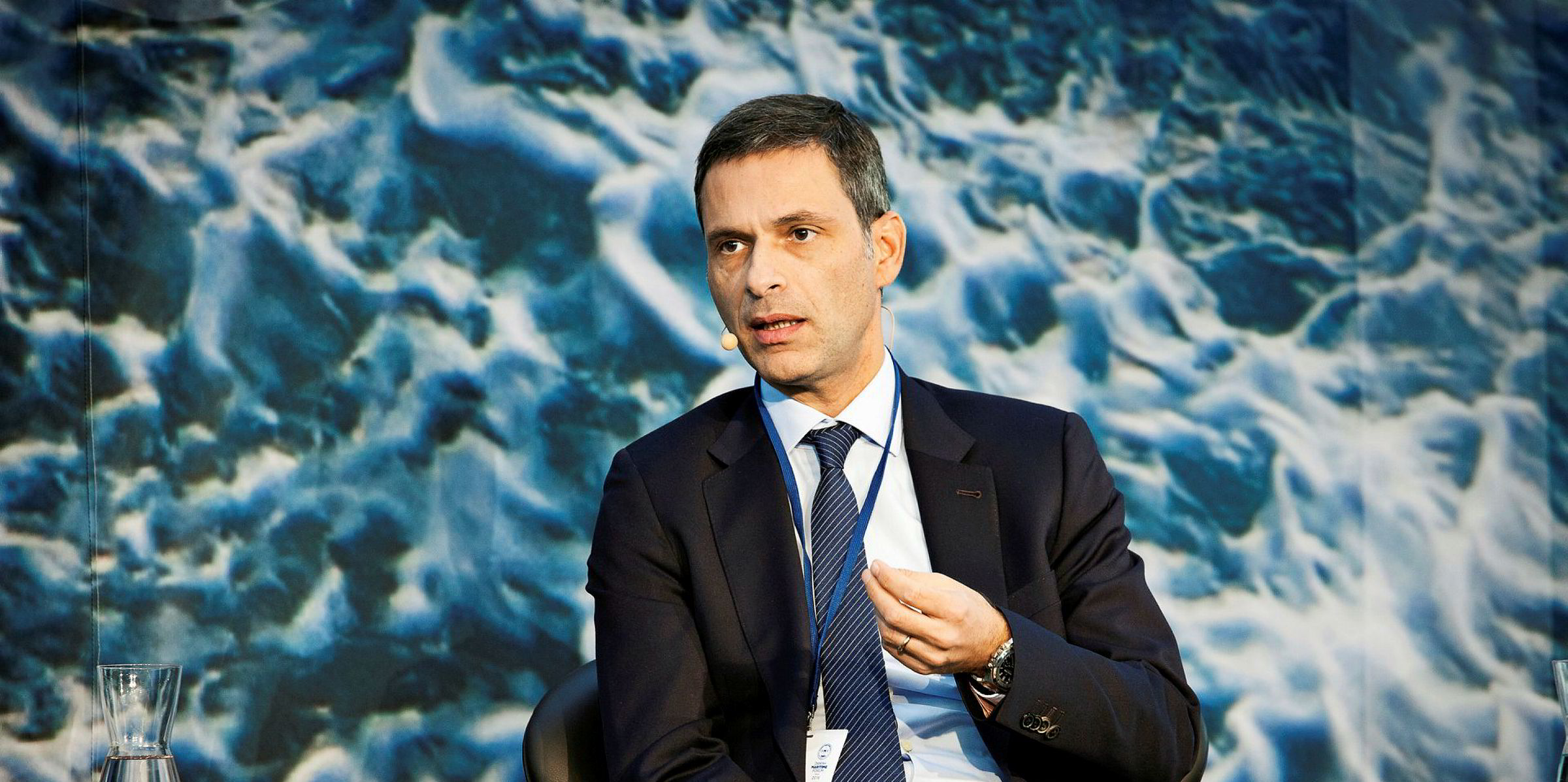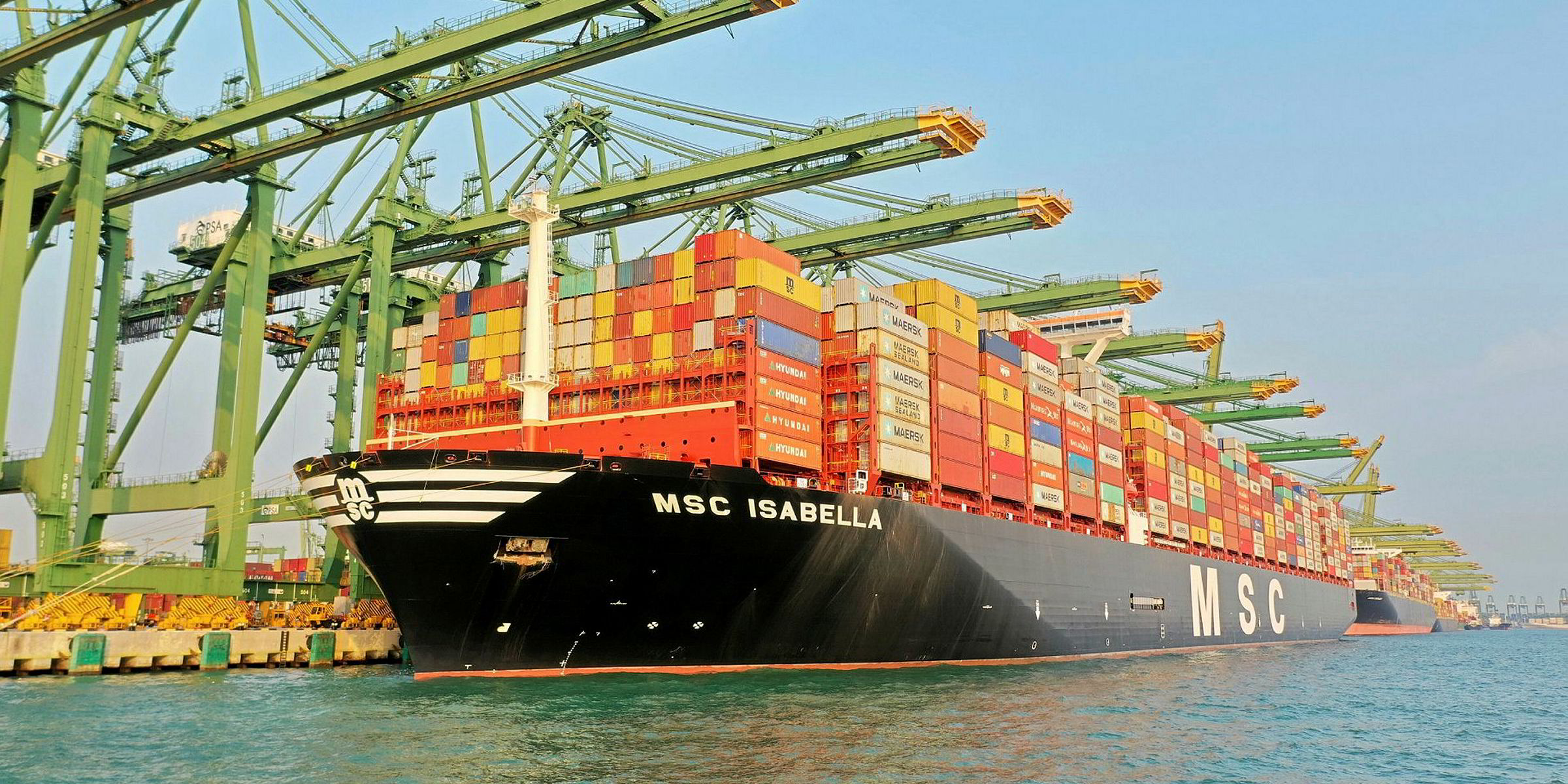CMA CGM must get a grip on its debt and improve its liquidity in 2020 or it may have to restructure its balance sheet, according to analysis.
Rob Sommers, distressed debt analyst at Reorg Research and author of a November report highlighting questions over the French container liner operator's finances, said the group will have to make good on its plans to sell more assets to tackle its debt.
Bank debt
This year alone, the Marseilles-based group was slated to pay back $1.7bn in bank debt that is due to mature by 30 September, alongside SGD 280m ($207m) in bonds due the same month, according to data as of 30 September 2019.
"With €725m [$804m] of senior unsecured notes due in January 2021 and an additional SGD 300m of notes due in June 2021, CMA will have to focus on tackling its debt maturity wall this year," Sommers told TradeWinds.
Asset sales
"However, to refinance in the primary market, investors will expect to see further asset sales to generate liquidity that will reduce leverage, especially as the company has other bonds maturing in 2022, 2024, and 2025, and total debt of $19.7bn."
If CMA CGM goes ahead with a new bond issue, investors may demand higher yields, Sommers added.
But this will be challenging to deliver in an environment where freight rates remain volatile and the macroeconomic picture remains unclear and driven by trends towards deglobalisation, he said.
If CMA CGM cannot improve its liquidity position and tackle its debt maturities, the group may have to restructure its balance sheet, Reorg believes.
"This presents risks for noteholders, as their unsecured claims rank behind the group’s secured bank debt," the analyst said.
CMA CGM declined to respond to a request for comment other than pointing to prior press releases.
The company has already announced plans to generate $968m by selling 10 container terminals to Terminal Link, a joint venture it owns with China Merchants Port.
The liner operator said in November it plans to raise more than $2bn in cash by mid-2020, including $860m from a vessel sale-and-leaseback programme.
It also aims to extend its debt maturities and reduce its debt by more than $900m.
Downgrade
Credit ratings agency Moody’s downgraded CMA CGM in September from a B1 to a B2 rating and has designated the outlook for both the group and recent acquisition CEVA Logistics as "stable".
Moody’s said the terminals sell-off was “credit positive as it will strengthen liquidity for the company”.
“However, given the debt-like feature of CMA's commitment to subscribe to [Terminal Link's] capital increase in eight years, the leverage effect is neutral,” the agency said in a comment on 27 November.
Moody’s added that the deal will ease short-term pressure on CMA CGM’s liquidity, but the company’s free cash-flow generation leaves limited room for debt reduction.

Refinancing prospects
It remains to be seen whether the group will be able to strike an accord with holders of its bank debt as that reaches maturity this year, according to Reorg.
"While CMA’s French lenders have been supportive in the past, it is unclear how they will react to future covenant breaches and what concessions they will ask for to permit a refinancing," Reorg stated.
The French group, which is majority owned by the Saade family, has been able to resolve its bank debt in the past, such as in 2012 when it agreed a set of restructuring principles with creditors.
Similarly, CMA CGM has refinanced its bond debt several times before, but has previously been able to do so at times when the freight market has been high, the report highlights.
For instance, a rise in freight rates in 2010 enabled the line to refinance its 2012 and 2013 bonds, extending its maturity wall before rates fell.
Similarly, during the high market of 2015, the liner operator issued €725m of senior notes due in 2021, and returned to the bond market three times to refinance its capital structure in 2017.
CMA CGM's acquisitions of Neptune Orient Lines and CEVA Logistics in 2019 have lumbered the group with yet more bond debt, of which much is due to mature this year and next.
"This shows the cyclicality inherent in the credit and that the macroenvironment can change materially in either direction," Reorg said in its report.
"What is particularly challenging for the company at the moment is that its capital structure contains many more bonds than in the past and that the current maturity profile makes it more difficult to extend shorter-dated maturities."
Source: CMA CGM, Reorg Research
| Amount | Leverage | Maturity | Coupon | |
| Bank borrowings | $5.54bn | 2019 | ||
| Securitisation | $1.86bn | 2019-2022 | ||
| Secured debt | $7.41bn | 5.4x | ||
| $207m | Sep 2020 | 4.65% | |
| $824.3m | Jan 2021 | 7.75% | |
| $221.8m | Jun 2021 | 4.40% | |
| $739.1m | Jul 2022 | 6.50% | |
| $116.5m | Jan 2024 | 8.00% | |
| $852.8m | Jan 2025 | 5.25% | |
| $341.1m | Aug 2025 | 5.25% | |
| Senior unsecured notes | $10.71bn | 7.8x | ||
| Other borrowings | $255.2m | 2019 | ||
| Bank overdrafts | $125.9m | |||
| Bonds reimbursable in shares | $31.9m | 2021 | ||
| Total debt | $11.12bn | 8.1x | ||
| Unrestricted cash | $1.31bn | |||
| Net debt | $9.81bn | 7.1x |
This story has been amended since publication to accurately reflect the status of CMA-CGM's bank debt.









